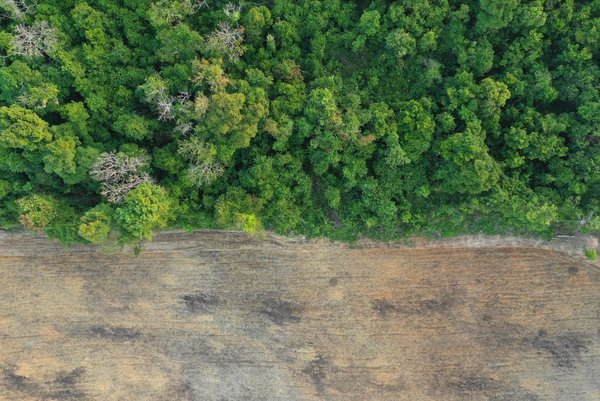 Read this article in French
Read this article in French- Share this article
- Subscribe to our newsletter
Hidden dangers of forest edge degradation
A study published by researchers from the Max Planck Institute for Biochemistry in July 2024 revealed that fragmentation caused by agricultural and road expansion reduces canopy height and biomass at forest edges by 20-30 per cent. This fragmentation impacts not only the immediate edges but also extends deeper into the forest, driven by microclimatic changes, leading to smaller canopy heights and reduced biomass up to 1,500 metres inside the intact forest.
The degradation of remaining forests is often exacerbated by human activities such as selective logging and fires, as well as edge effects. The latter occur when trees at the boundaries of forests are exposed to unfavourable environmental conditions, largely influenced by their neighbouring environment such as roads and managed land.
The study calculated that the overall edge effect threatens up to 18 per cent of tropical moist forests due to high fragmentation and its extensive impact. Furthermore, it was confirmed that even low-intensity disturbances can reduce canopy heights by 20-80 per cent and significantly alter canopy structure over 20 to 30 years. This long-term degradation is attributed to low recovery rates, dependent on forest composition, climate conditions and additional disturbances.
Degradation often affects larger areas than complete deforestation and contributes significantly to carbon emissions and biodiversity loss. Despite its significant impact, degradation is frequently overlooked and neglected in policies aimed at reducing greenhouse gas emissions.
Considering the diverse ecosystem services provided by tropical forests, the study’s findings underscore the urgent need for their protection. The hidden human footprint of tropical forest degradation and its long-lasting effects demand greater efforts to prevent further degradation and to protect already degraded forests to fulfil the conservation pledges made at recent United Nations Climate Change and Biodiversity conferences.
(mpg/ile)
Read more on the website of the Max Planck Institute for Biochemistry





Add a comment
Be the First to Comment